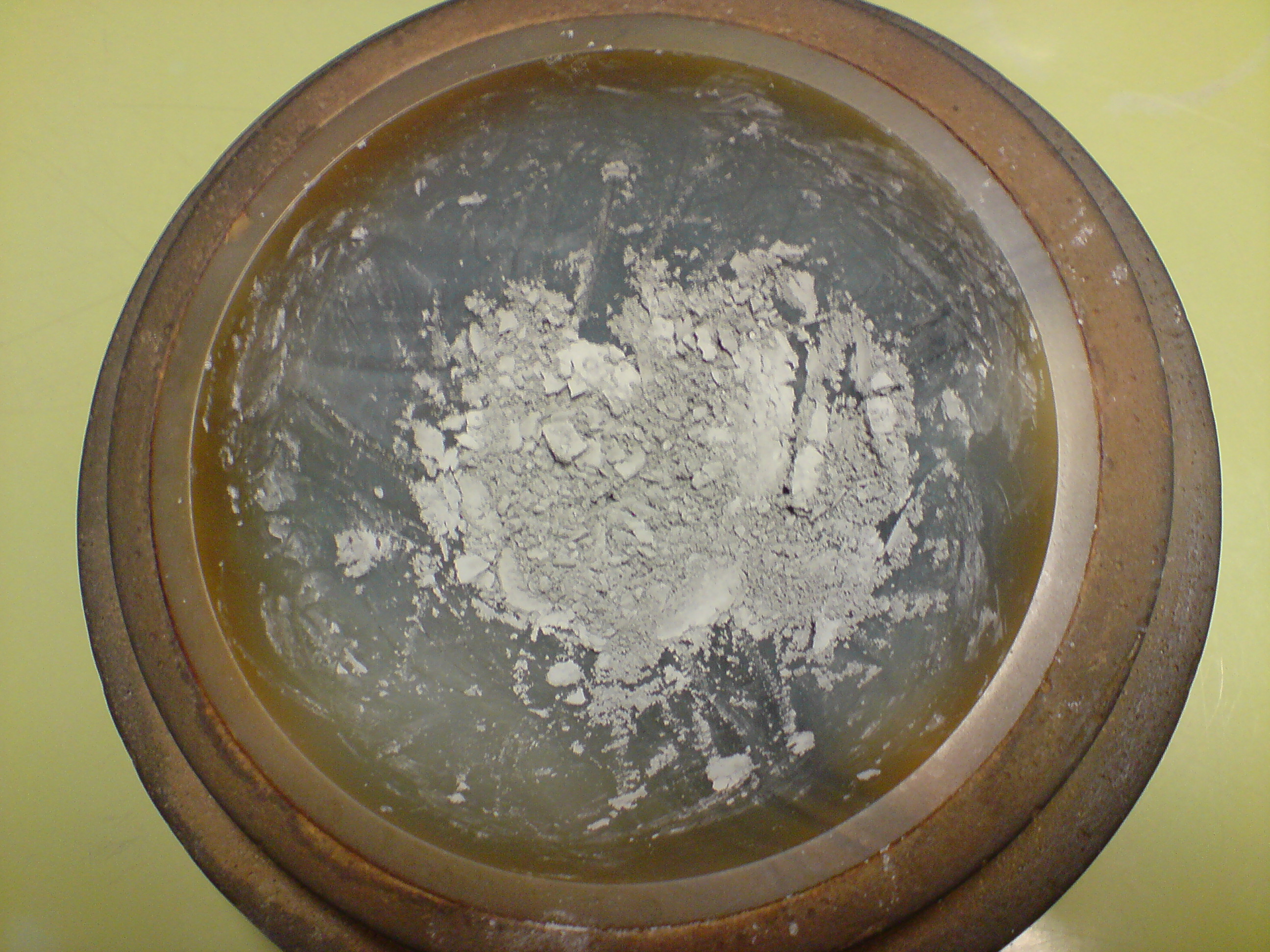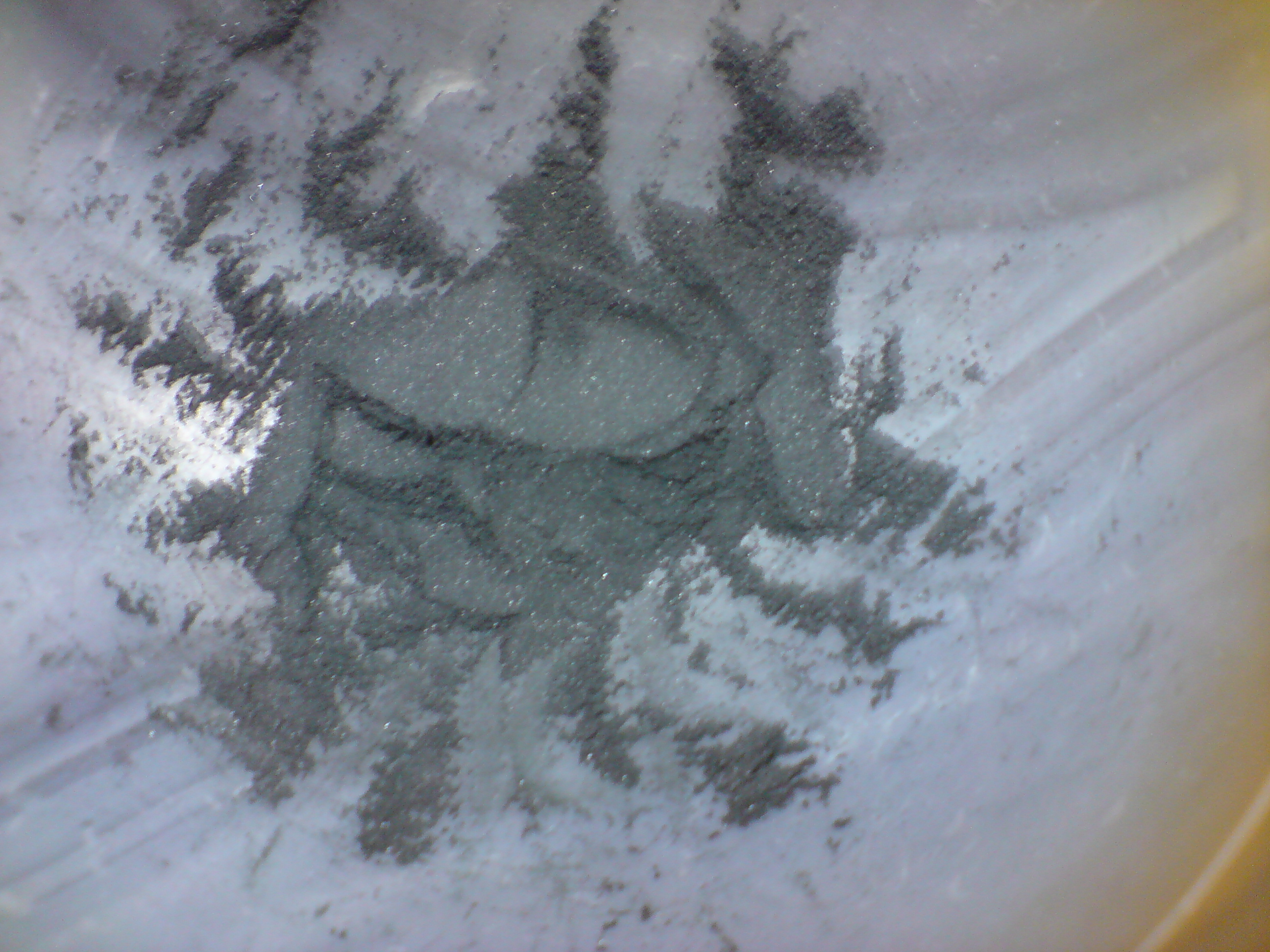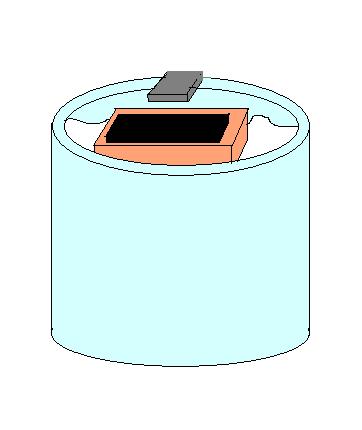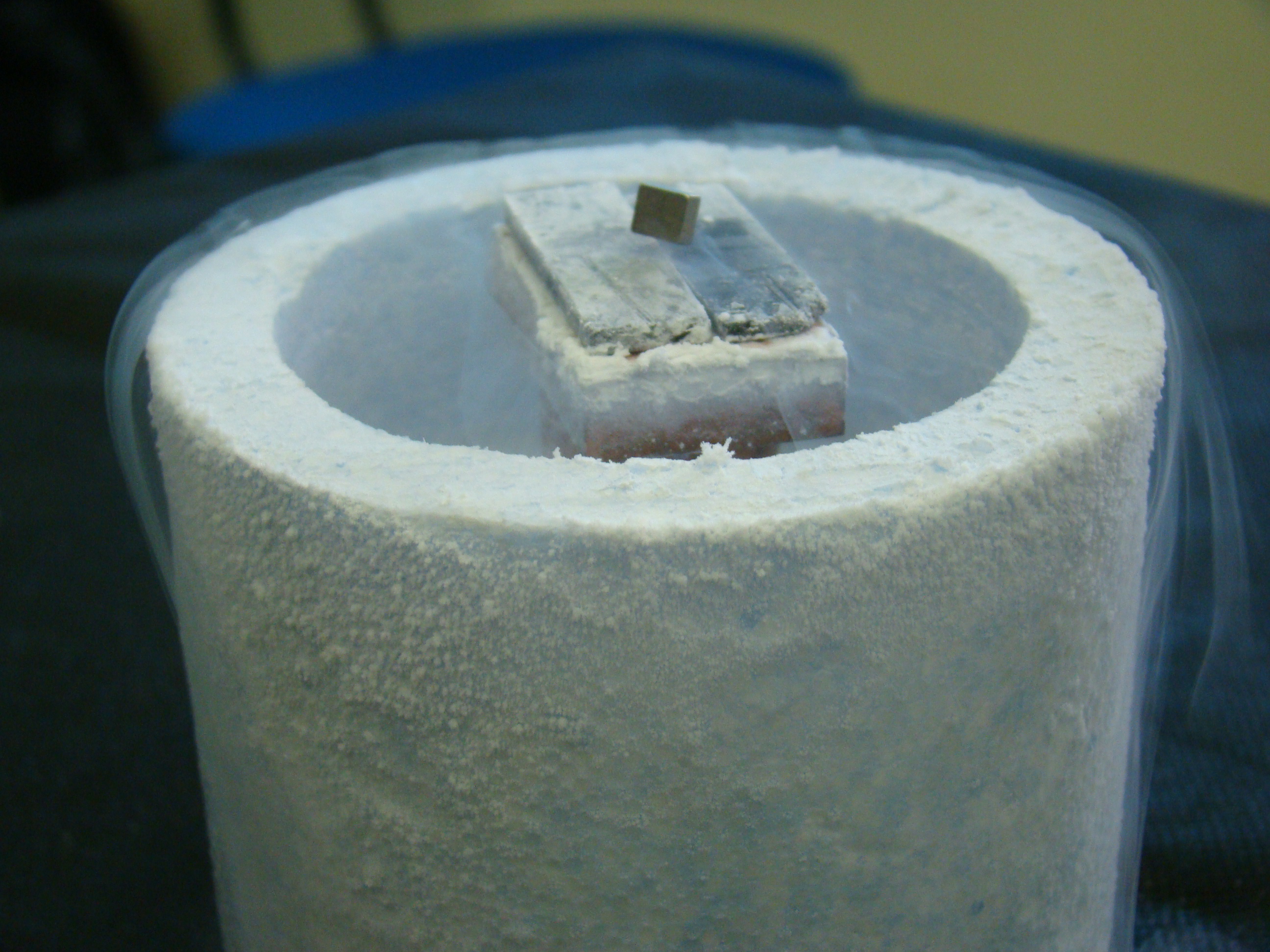Superconductivity
Published:
In this post I will summarize what superconductivity is, tell you about some historic aspects, pass through a little of theory (without touching the “mathematics” behind it – because this work was done when I was a teenager) and show to you all the stages of the production of the cuprate YBaCuO pellets and the development of a support, to see the magnetic levitation using them.
It refers to my Pre-Scientific Initiation in Superconductivity, that I have made from 2009 to 2011 (my high school years), under advisor of Professor Antonio Carlos Hernandes. It is important to say that, in this work, I have been co-advised by Professors Ariane Baffa Lourenço and Marcelo Rubens Barsi Andreeta, from which, together with Professor Hernandes, I own a lot about my knowledge about scientific writing and materials production.
What is superconductivity?
The superconductivity is a phenomenon based on quantum theory expressing the absence of electric resistance and being able to promote electromagnetic levitation. Yeah, at that time I felt like I am the one producing the ‘possible devices’ for the Back to the Future hoverboard (but not at the room temperature :p).

Figure 1: Back to the Future hoverboard.
Using just a few words, I studied what a high schooler could touch about the superconductivity theory, I had prepared a cuprate pellet (made of yttrium, barium and copper) and I made a scheme to a support, to present its magnetic levitation effect into the science fair of my school. The main References that I can cite are [1, 2].
Historic aspects
Superconductivity was discovered by Heike Karmeling Onnes when he worked with mercury, studying its electrical properties at low temperatures. Using liquid helium to refrigerate mercury, Onnes discovered that at temperatures under 4.2 K (- 268.8º C) its electrical resistance was ZERO and, increasing the temperature, he recovered gradually its resistance.

Figure 2: Mercury resistance as a function of temperature.
The evolution on the discovery of other superconductor materials is a hot topic, for a different kind of materials, until nowadays (see the paper Room-temperature superconductivity in a carbonaceous sulfur hydride or any other free examples on arXiV). But it was not always true: first researchers believed that just elemental substances (as mercury, lead and niobium) were able to behave as a superconductors and really close to zero absolute temperature. Just in the 80’s, cuprates (ceramic materials) were discovered exhibiting the same phenomenon.
A little of theory
Current and electrical resistance
In the conduction of electricity the guys responsible to carry it are the electrons, the ones that comes from the metallic bonds from its atoms. In equilibrium, and in the absence of electric fields, they behavior randomly and there is no current.
At higher temperatures (room temperature, for instance) an electric field is able to move the electrons in some oriented direction and that is the electric current. However, the thermal effects leads to the excitation of the positive particles, that interferes with the movement without interruption of electrons - this is the electric resistance.
When we decrease the temperature the thermal effects are reduced, i.e., the thermal vibrations decrease. Ideally, the electrical resistance would be zero only at absolute zero temperature, decreasing until it. But, this only happens in perfect crystals, because real materials have imperfections (impurities, vacancies, etc.).
Superconductivity
The Cooper pairs
The superconductivity phenomenon could be explained by a condensation of electrons, which are called Cooper pairs. This condensation happens with the electrostatic interaction of the electron with the material crystal potential, that forms pairs of particles. Thus, the electrons cannot be treated as independent particles.
To make things clear, the Cooper pairs are pairs of electrons, and not a pair of one electron and the Crystal potential. Ok…but what about the Coulomb’s interaction? What happens is that, when electron interacts with the positive ions of the crystalline network (due to its higher energy), it deforms the network, being able to attract electrons with low energies around it. Yeah, finally we have our Cooper pair!
Figure 3: An illustration for the Cooper pairs.
Cooper showed that two electrons, with opposite spins, are connected, creating a particle of spin zero, the Cooper pair. This strong correlation is a unique coherent state, insensitive to network disturbances, resulting in absence of electrical resistance, enabling superconductivity.
Room temperature
It is the specific temperature $T_C$, for each material, from which below it, there is the superconductivity phenomenon.
Meissner effect
It is the repulsion of a flux of magnetic field coming from the exterior of the superconductor material, when it is presenting this property.

Figure 4: An illustration for the Meissner effect.
When we take a closer look at the lines of and external magnetic field, with temperatures above the critical one ($T > T_C$), the lines passes through the material as passing through vacuum. For $T < T_C$, already in the superconducting state, the expelled magnetic field forces the external magnetic field to deflect, bypass it instead of passing inside it.
Cuprate pellet YBaCuO
The YBaCuO was discovered in 1987 for the team of the Professor C. W. Chu, in the University of Texas (the original paper could be find here). This cuprate has $T_C = 92 K$ ($- 181 ºC$), then, it is superconductor in a temperature higher than liquid nitrogen ($T \simeq 77 K$ - 196ºC), what facilitates a lot this use.

Figure 4: An illustration of the crystalline structure of the cuprate.
I works as a superconductor material due to its crystalline structure in planes: there are planes with electrons of elevated mobility (like the ones of Cu-O – the active blocks) and intercepted by layers with low conductivity (the charge reservoir blocks).
My work
Material production
I have made a sample of the cuprate YBa$_2$Cu$_3$0$_7$ following the pipeline (here I show my results in each stage):
- Material: powders of Y$_2$O$_3$, BaCO$_3$ and CuO;
- Stoichiometric calculation;
- Manual homogenization:
Figure 5: The result of the powder mixture.
- Calcination:
Figure 6: The result of the crushed mixture after calcination.
- Pastillization;
- Sinterization in an oxygen atmosphere:
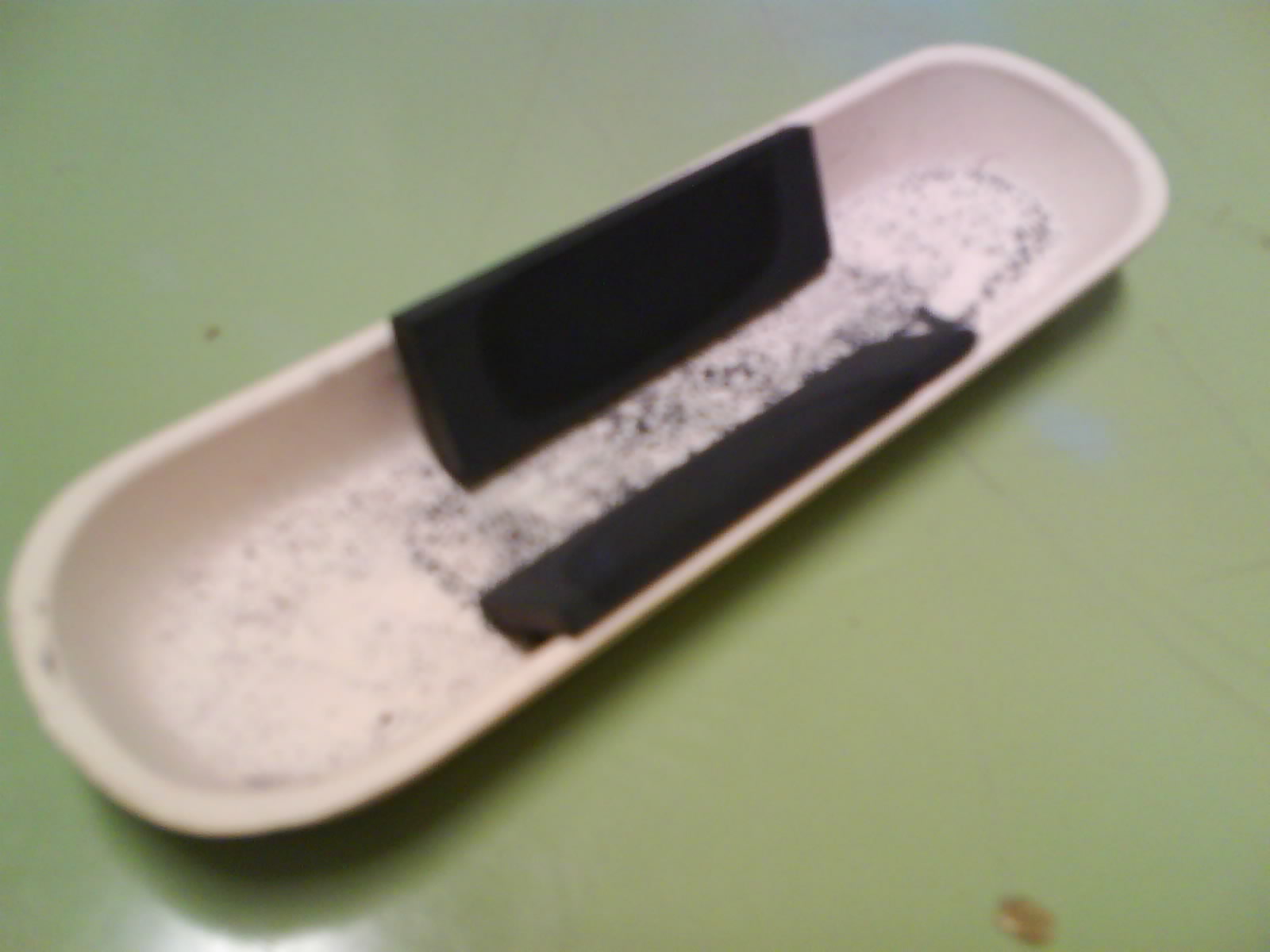
Figure 7: Pellets ready.
Support and scheme
In order to test the Meissner effect, I have prepared a scheme to a support, allowing the magnetic levitation of a magnetic. The scheme consist in:
- the superconductor pellets;
- the bead magnetic;
- a cooper support;
- a styrofoam container;
- nitrogen liquid.
Figure 8: The levitation scheme – in draft.
The real scheme was very reliable:
Figure 9: The real levitation scheme.
You can take a closer look here (click to be redirected to the video):
Figure 10: A zoom and a link to the video.
References
[1] Osterman, F.; Rureur, P. Supercondutividade: Temas Atuais de Física. Editora Livraria da Física. Edição 1, 2005.
[2] Collins, Graham, et all: Supercondutividade a altas temperaturas, Scientific American Brasil, ano 8,n.88, p. 48-55, Setembro, 2009.

